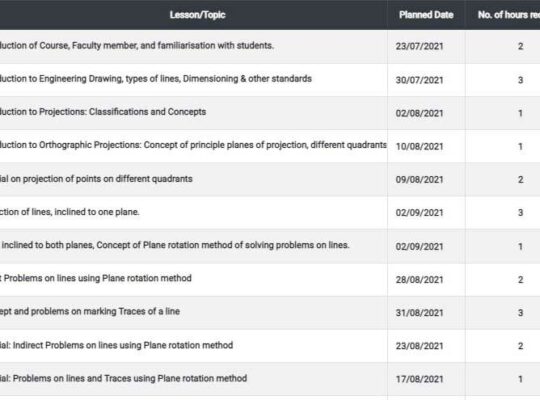Internal Quality Management has emerged being one of the most essential methods of establishing and evaluating excellence at the institutional level in higher education. This seems to be especially important given the education industry’s increasing worldwide growth and development.
In two main ways, Internal Quality Management is linked to higher education management:
Firstly, it gives evidence-based strategies for betterment reasons, with the goal of ‘breaking the cycle’ involving data generation and data use. Universities must establish that Internal Quality Management is not a stand-alone activity, and is instead linked to planning process, administration, and allocation of resources such that the information obtained must be used to inform administrative and academic decisions.
Secondly, while Internal Quality Management primarily places emphasis on enhancing learning and teaching, it could also be used to examine and enhance managerial effectiveness. Because the proper operation of educational core functions is reliant in part on decent university administration, strengthening the latter could be a critical leverage for improving quality.
Quality environment entails the following among several other aspects:
- the institution’s goal, objectives, and vision being reassessed on a regular basis
- executives setting an example by interacting with partners
- regulatory compliance
- recognising employees’ efforts
- using the “best of the institutions” like a role model, etc.
An excellent culture does not require a quality management system; it is acknowledged and respected across all stakeholders in the educative act. It would not be executed but it is constructed stepwise, activity by activity, till it becomes a reality.
To guarantee quality and accomplishment of execution objectives, colleges should assemble their quality administration frameworks. Intermittent reviews are performed on these institutional quality administration frameworks. This is steady with the worldwide pattern of advanced education organizations having a huge level of independence as far as quality confirmation.
University of Vienna – An example of QA Framework In HEIs
Let’s take an example, The University of Vienna is one illustration of how an internal QA framework has been carried out. The Independent Unit for Quality Assurance (BEfQS) was set up to help the University of Vienna’s obligation to superior grade in educating. This serves to the further improvement of the college’s quality confirmation framework and the related quality rules, strategies, and instruments. Moreover, information about graduates is recorded in two ways at the University of Vienna:
- Survey of graduates promptly following graduation: The overview results are surveyed and given to the heads of study programs and the group of ministers on a yearly premise.
- Analysing vocation ways with the utilization of government managed retirement information: BEfQS has charged Statistics Austria to assess graduates’ government managed retirement data dependent on different standards (period of time until first work after graduation, number of changes of businesses, term of first business, normal month to month pay, financial classifications of organizations, workforce support rate and work status, observing of improvement).
Today, HEIs face monetary, political, and social issues as they look to place themselves in the education sector. The college organization has perceived the expanded need of good quality administration in guaranteeing astounding instruction and victorious alumni to expected partners. Since the yield of advanced education is the foundation of the whole nation and society, there is a requirement for an imaginative procedure to rethink the current quality administration framework.
What is the Role Of IQAC (Internal Quality Assurance Cell) in HEIs
An Internal Quality Assurance Cell should assume a basic part in defending the nature of higher education in India. The arrangement of this unit is a prerequisite for each advanced education foundation looking for NAAC accreditation. NAAC, AICTE, UGC, and state and central legislatures should force specific kinds of limitations on each advanced education establishment in quality components of administration conveyance, placing them under pressure in a few quality measurements.
There is an increasing need for enhancing the quality of Indian education system to keep it stay afloat amidst the competition from foreign institutions’ Indian presence. In the not-so-distant future, Indian institutions will likely have a hard time keeping up with the quality of education provided by these international institutions. This can be tackled by constantly monitoring and improving education framework by forming the likes of Internal Quality Assurance cell.
Several Higher education institutions have already built the Internal Quality Management Unit as a qualitative maintenance operation after accreditation. Recognizing the value of such institutional internal quality systems, the UGC has made a policy to encourage educational institutions to create IQACs, with which it has chosen to grant seed funding.
As a matter of fact, the Internal Quality Management Unit is envisioned as a vehicle for establishing and maintaining a culture of excellence at the administrative level. Each institution must have an internal quality management system that is suitable in processes and structures, as well as adaptable to accommodate the different interests of stakeholders.
The UGC would pay every college Rs. 3.00 lakhs as seed money to cover the IQAC’s setup and strengthening charges. This funding would be sanctioned/issued in stages, with 90 percent granted as first instalment and the balance 10 percent granted only after college receives Yearly Quality Assurance Reports, Audited Utilization Certificate, and Statement of Expenditure.
The IQAC can direct and systematize an institution’s activities and objectives towards academic achievement. It would be a consultative and participatory instrument of the institution, rather than another hierarchical structure or record-keeping operation. By devising intervention techniques to eliminate inadequacies and improve quality, the IQAC must become a driving factor for bringing in quality.

About the Author: Pooja Bhatia
Pooja is a teacher working for NGOs and a student pursuing management studies. Her interests include education, women empowerment, music and drama. A winner of various B-school competitions including IIM and BITS, Pooja is also a great content strategist. She has article published in the Times of India.
This article has been re-published on Medium





